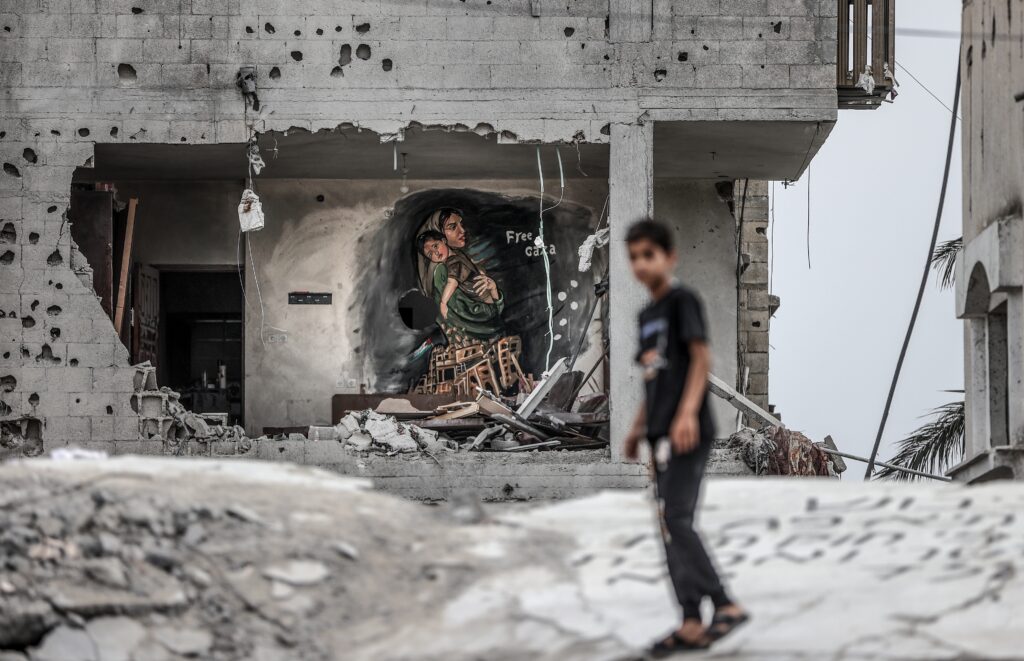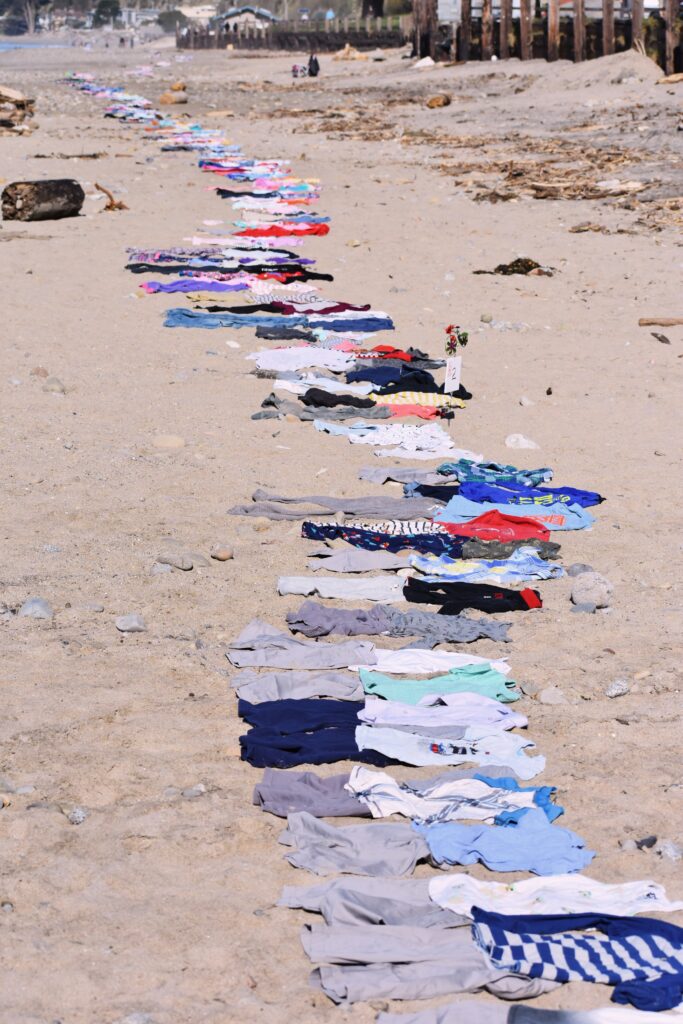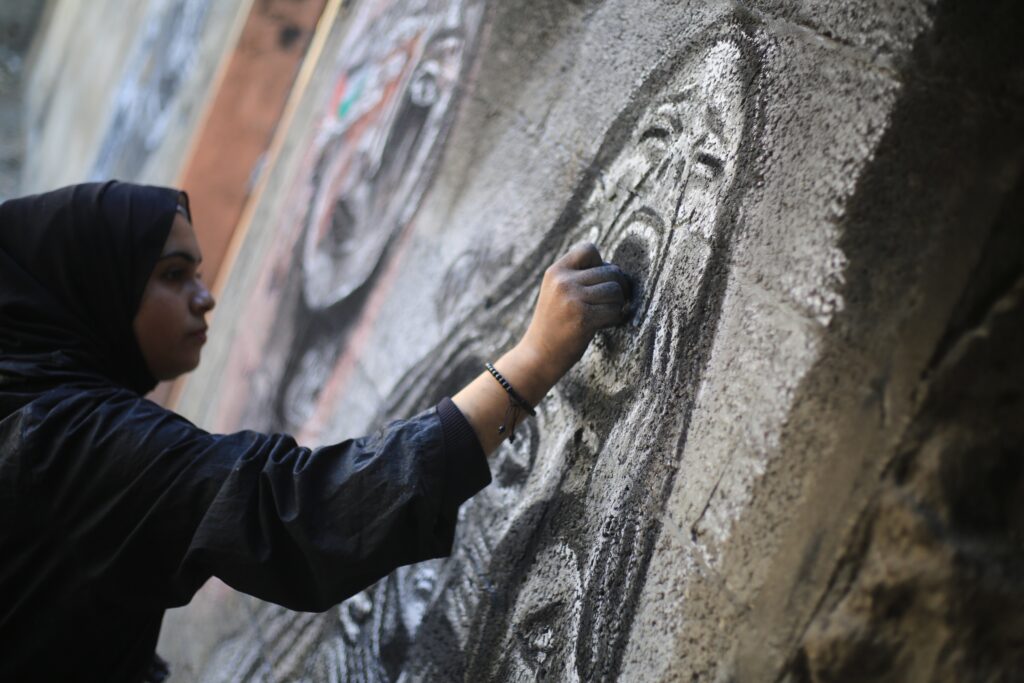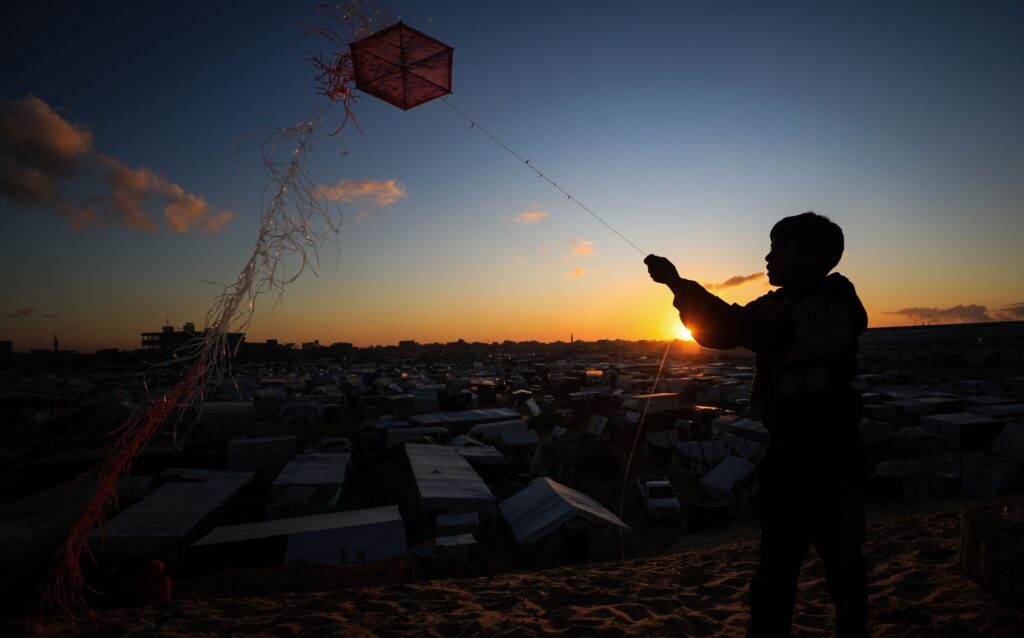The Responsibility of Witnesses to Genocide
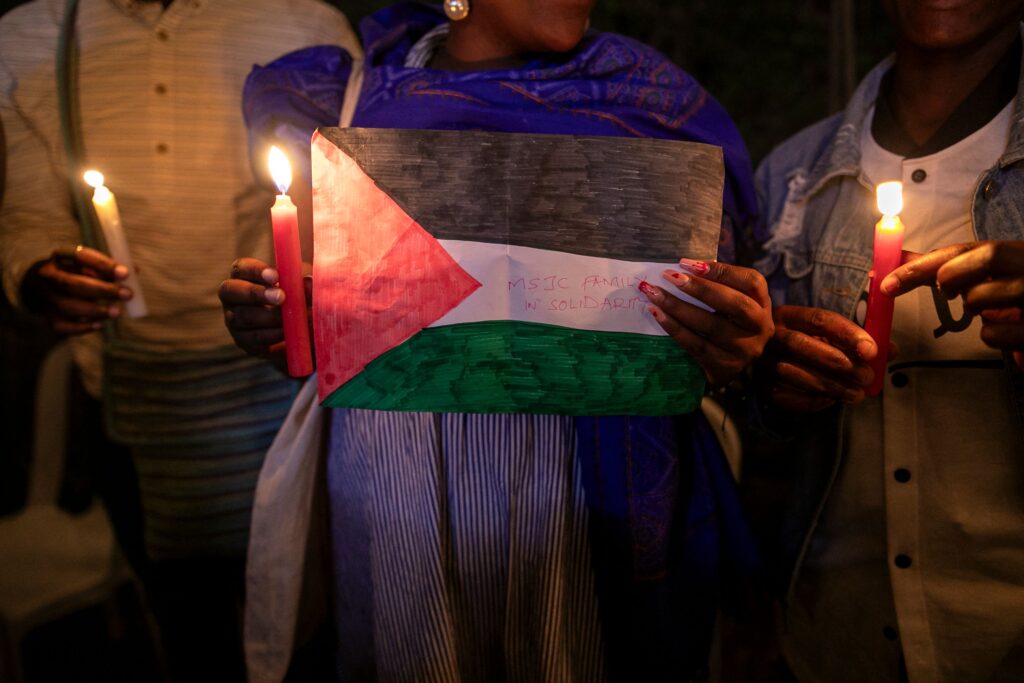
What can you not unsee?
I cannot unsee the reporting and images from Gaza that show a mother cradling her lifeless miracle baby who took her 580 injections to meet. Or Rania Abu Anza, another mother, holding her murdered twins that took her 10 years of in vitro fertilization to conceive. Or the children orphaned, injured, and shaking. Or the decomposing infants who had been left attached to hospital machines after their intensive care unit medical staff were forced out at Israeli gunpoint. Or grandfather Khaled Nabhan gently rocking Reem, his murdered 3-year-old granddaughter—the soul of his soul. Or the young boy carrying a slain child through waist-deep water to find somewhere for burial. Or the man pulling a child out of the rubble, assuring her she is alive and as beautiful as the moon. Or the father carrying his children’s body parts in plastic bags. Or the doctor who had to operate on his child without anesthesia and then bury him after he died, likely from the pain. Or the 7-year-old girl, Sidra Hassouna, whose body hung from a wall in Rafah after the impact of a night of Israeli airstrikes targeting people sheltering in tents. Or the rows of men stripped naked for torture as far as the eye can see.
The list is endless. Some names circulate beyond Gaza; most do not. Each person, a whole world.
This is the visual economy of a livestreamed genocide: the theft of Palestinian lives and the attempted theft of their dignity in death, broadcast as evidence where evidence has always abounded.
Israel has murdered 33,006 Palestinians in the past five months. 33,006 lives, at the time of writing. 33,006 mothers, daughters, sons, uncles, aunts, fathers, grandfathers, infants, neighbors, health care workers, journalists, patients. This number has been updated in each round of edits, and when it’s published, the number will likely already be out of date. For those of us not inured to Palestinian death, this carnage animates our everyday as we move through sleeping, eating, remembering to drink water, dressing our babies, teaching our classes, going to work, screaming in the streets, calling our representatives, writing letters, drafting statements, planning actions.
We are all witnesses to this genocide but in radically uneven ways. Palestinians in exile forced to witness this genocide must not only witness their people sacrificed, once again, for Israel’s expansionist vision, but also witness the screams of those in the streets ignored by political leaders and the indifference of those whose lives have somehow remained uninterrupted. Many journalists on the ground in Gaza have laid down their vests, some in order to actually live through these layered massacres and some to protest bearing witness to a world that refuses to act. In the words of journalist Motaz Azaiza, in one desperate cry before he left Gaza: “You are all useless/without shame watching us get killed one by one.”
This indictment demands that we ask ourselves: What is incumbent on each of us as witnesses to a genocide?
My book, Invited to Witness: Solidarity Tourism Across Occupied Palestine, is about the practice, since the first intifada, of bringing international tourists to Palestine to witness the effects of Israeli state violence and work toward Palestinian liberation.
The reason solidarity tourism exists as a practice is because Palestinians are routinely not treated as reliable narrators of their own condition, requiring international presence to corroborate their accounts of Israeli occupation. Tourists travel to Palestine in search of evidence, even though, in the words of one tour guide I interviewed to a tourist wishing to collect proof: “Look around you. There is evidence everywhere.” Despite the volumes of literature where Palestinians have chronicled their displacement, tourists still need to “see it to believe it.” This phenomenon treats witnessing as an alibi for research, positioning tourists’ accounts above the archives Palestinians have produced on their own condition.
Right now, while the world witnesses a genocide livestreamed on social media, Palestinians are still not treated as reliable narrators: They are accused of fabricating the numbers of their dead, of bombing their own hospitals, and of murdering one another via a stampede when they were shot by Israeli soldiers while waiting in line for flour. Even as parents write their children’s names on their bodies so they can be identified if they are bombed overnight, Palestinians are accused of using their babies as shields.
What would it mean, in this moment, to believe Palestinians when they speak? What would it mean if Palestinian warnings, based on generational experiential knowledge of Israeli state violence, were heeded? If, when Palestinians said, “This is not about Hamas—this is about land,” they were believed before Israel was threatening a ground invasion of Rafah, the last place for Palestinians to go, where an estimated 1.5 million Palestinians are sheltering.
The first ask of the witness to a genocide, then, is the work of believing Palestinians when they speak.
This, I would argue, is a lifetime commitment to the work of reading: of anchoring oneself in the knowledge Palestinians have produced, of learning from Palestine, of taking in literature, narratives, and scholarship from Palestine and its diaspora as a daily practice. During the bombing campaign on Gaza in May 2021, hundreds of academics from around the world signed a pledge called “Palestine and Praxis: Scholars for Palestinian Freedom.” The signatories, myself included, committed to meaningfully engaging Palestinian scholarship in our classrooms, research, and institutions.
That public letter—like many statements circulating today—underscores: “pressuring our academic institutions … to respect the Palestinian call for Boycott, Divestment, and Sanctions of Israel” until it complies with international law; naming and resisting “complicity and partnership with military, academic, and legal institutions” that entrench Israel’s policies; “supporting student activism on campus”; “holding our universities accountable for violations of academic freedom”; and including Palestinian expertise on Palestine in our work—that is, turning to Palestinian studies to understand what we are witnessing.
The second ask is what Palestinian writer and clinical psychologist Hala Alyan describes of the witness, including the diasporic witness, to remain undistracted and undeterred.
Through the labor of enumeration, the listing witnesses do over and over again, we repeat: Israel has murdered 30,000+ Palestinians, 40 percent of them children, flattened neighborhoods and cities, deleted entire families from the civil registry, relentlessly bombed hospitals and universities and bakeries, and armed settlers in the West Bank, where settlers and soldiers have murdered hundreds of Palestinians since October. We repeat the other lists: The U.S. is helping to fund this violence, at a minimum of US$3.8 billion per year, and an estimated 68 percent of the weapons Israel imports come from the U.S.—many of which are used to kill Palestinians. The U.S. vetoed 45 U.N. Security Council resolutions from 1972 to 2023 to protect Israel from criticism and accountability. The massacres Israel is committing every day would be impossible without the U.S. enabling and exonerating Israel at every turn.
The listing, the accounting, the enumerating feels endless and often futile. But it is not. It has nourished the sea change that has reversed the status quo silence and made household names out of Palestinian journalists like Azaiza, Bisan Owda, Plestia Alaqad, Wael Al-Dahdouh, Hind Khoudary, and Lama Abu Jamous (the youngest at only 9 years old). The work is in continuing to remember, to name, to list, to diagnose past and present Israeli state violence until it comes to its inevitable end.
The third ask, then, is to act, over and over again, every day, as much as you list.
To not watch Palestinians be killed one by one and do nothing. To speak of Palestine wherever you go. To scream for a ceasefire in every corner of your world. To stand hours in line at your city council resolution meetings. To refuse to confuse discomfort with danger. To not be afraid to face baseless accusations of antisemitism. To make calling your representatives, for those of us whose governments facilitate Israeli state violence, part of your morning/mourning routine. To do the long work to sustain disruption, from protests to shutdowns to bail funds to demanding dropped charges. To speak the truth in all the worlds you inhabit.
Organizers and scholars alike have called solidarity what “love looks like in public.” [1] [1] This is a play on scholar and activist Cornel West’s description of justice as love in public. “Love guides our methodology for liberation,” writes the Palestinian Feminist Collective. Solidarity includes accepting the potential risks of that public love.
Solidarity means taking on the risks of speaking out against genocide and fighting for a world where speaking out is in such collectivity that it is no longer a risk. Solidarity means understanding what the ask is. Solidarity means stopping business as usual, drawing businesses invested in occupation to a grinding halt, and shutting down weapons manufacturers through direct actions. And it means building communities where people radically love one another in ways that sustain the work: where we normalize and model caretaking, protecting the most vulnerable among us, taking breaks, and stepping in when others need a break. Solidarity means showing up for one another whenever possible, day after day.
I wrote a book on witnessing and solidarity in Palestine, but I am no expert in the face of the staggering and incalculable horror of what we are witnessing. My students ask me: How do you/we keep doing this work when it feels like it changes nothing, and it is always under attack?
There are no easy answers. Most days I feel completely helpless as the carnage haunts me from my phone. Every time I close my eyes or look at my own baby, the life in her cheeks, I feel the loss, fear, and horror of every grieving parent in my bones. I go through the motions in a daze when the wins seem small against a behemoth that so few political leaders have the desire, will, or courage to stop.
But then I remember the work of the witness, and the work of solidarity, and how such work requires nourishment. It requires us to allow ourselves to feel helpless until we renew our resolve, until we recommit, over and over again, to reading, enumerating, acting. I pause, breathe, and remind myself that solidarity with Palestine is a public love I choose every day, through acts and through work, until Palestine is free—from the river to the sea.
Editors’ note: So as not to further disseminate images of death and violence, only a select number of sources are linked as examples. However, all reporting and images discussed have been verified by the author and editorial team.





























